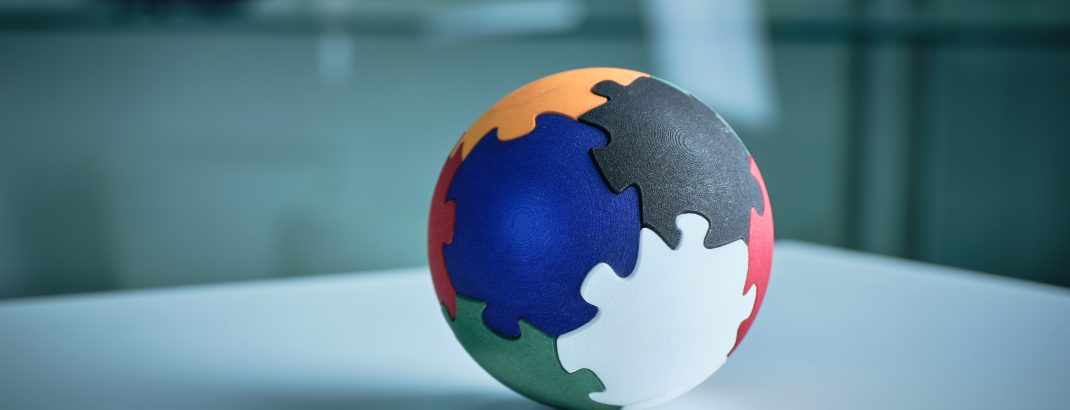If you’ve used the same manufacturing methods for years, or perhaps even decades, it can be daunting to get to grips with a different technology.
But whatever part or product you are making, this could be the year you discover how additive manufacturing can help streamline your processes, localise production, reduce costs and embed sustainability into your manufacturing. Here are our top reasons to embrace the 3D printing revolution.
Supply chain disruption
Additive manufacturing is having a significant impact on supply chains as more businesses turn, at least in part, away from traditional manufacturing methods.
One of the great advantages of AM is parts can be printed on demand – produced cost effectively and quickly, as and when required, and shipped within days rather than weeks.
3D printing can also de-risk operations, rather than relying on one supplier for a critical part, and futureproof a product as spare parts can be produced easily from digital data, rather than having to stock a large, expensive inventory that may never be used. Here at Ricoh 3D, we work with customers such as Groupe SEB, who manufacture KRUPPS coffee machines, to ensure they’re able to meet their 10-year repair promise for the supply of spare and replacement parts.
AM is not just about manufacturing prototype and end-use parts though. Bespoke jigs and fixtures are increasingly designed and created without expensive tooling to significantly improve production line efficiencies.
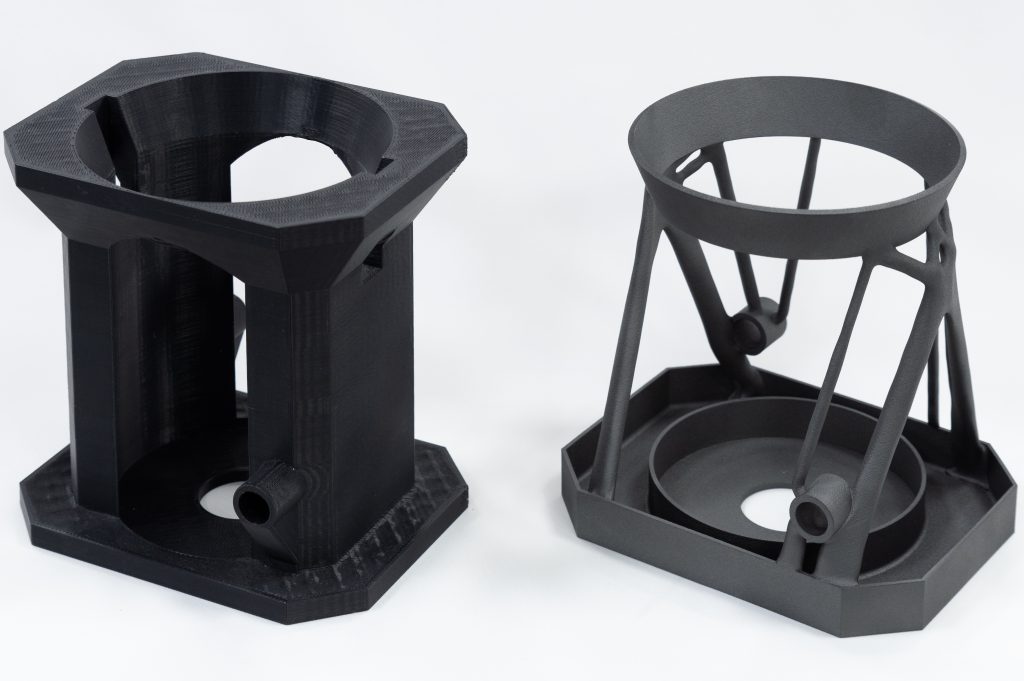
Design Freedom
3D printing offers design freedom that no other manufacturing technique can. This, together with the sophisticated optimisation software available with AM, creates organic shapes and complex geometries which have previously been impossible. There are very few constraints – almost anything that can be imagined in CAD can be printed.
This is a huge shift from Design for Manufacture (DFM) methodology, which has encouraged designers to eliminate manufacturing difficulties and minimise cost. The next generation of engineers are practicing DfAM (Design for AM) and using generative design software as standard, which will help drive AM’s mainstream adoption.
With DfAM, parts can be radically redesigned to consolidate assemblies and reduce costs, whilst maintaining or improving part performance.
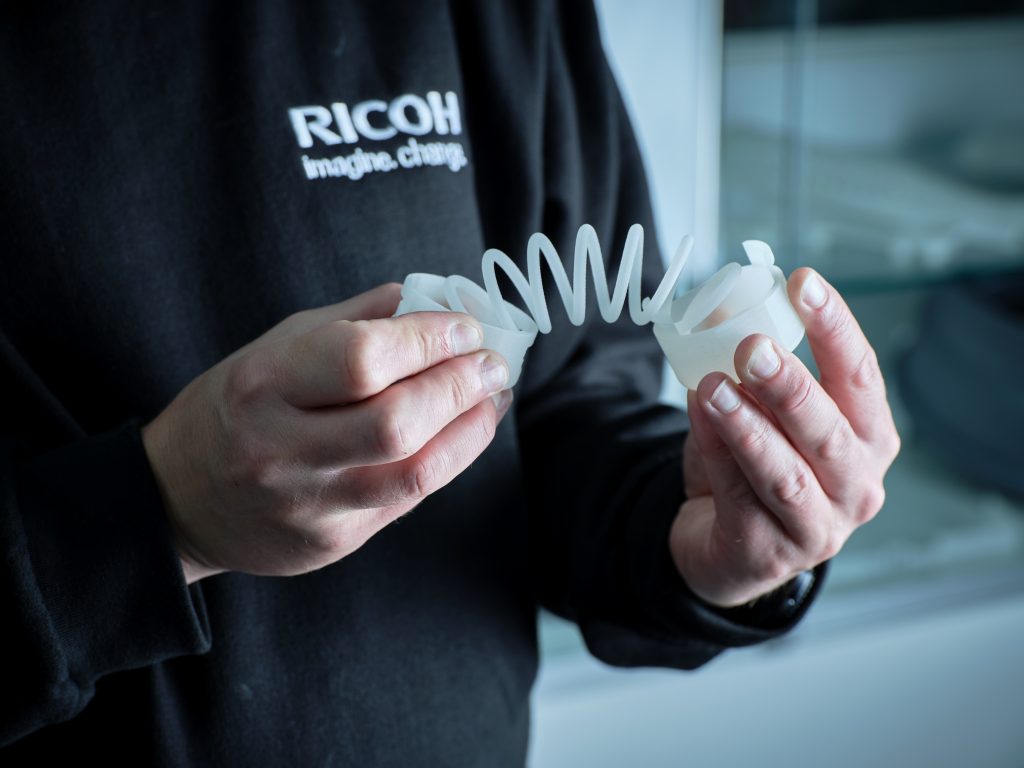
Customisation
More than ever, the consumer demands a personalised approach and AM is perfectly positioned to offer manufacturers a viable route to this. The automotive sector is already driving this trend, with Volkswagen rolling out mass customisation to 100,000 vehicle components such as gear knobs a year. Our engineers have also worked on advanced customisation applications such as high-end car seat prototypes specifically designed around the driver’s shape and physiology. The flexibility of AM makes it the only cost effective and straightforward means of personalisation on a mass scale.
Small batch/low volume production and prototyping
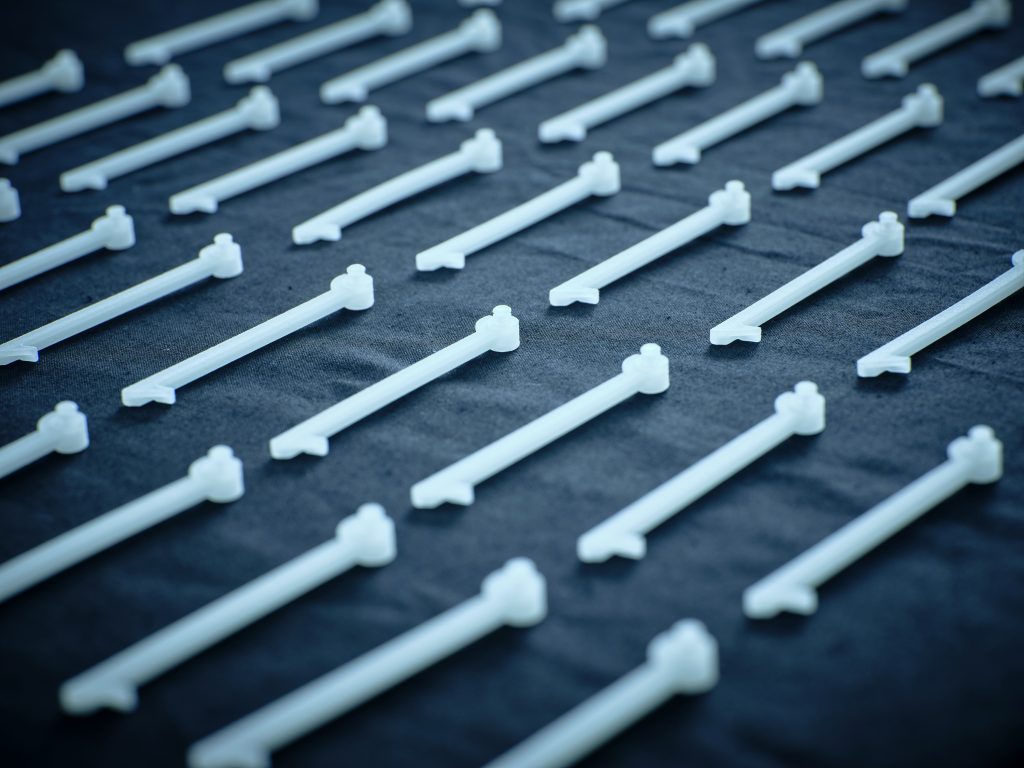
3D printing has long been pigeonholed as a prototyping tool, due to its ability to turnaround multiple design iterations cost effectively, in days rather than months. This is largely down to the fact that the technology can manufacture parts without the requirement for rigid, expensive and long lead-time tooling. The technology is able to manufacture anything thrown its way at the touch of a button. At no other time in history has this been more relevant – with the ability to change up production overnight, in a way that no other industry could, when PPE supplies were urgently required in the face of the Covid-19 outbreak.
With AM, part prices are fairly consistent regardless of complexity and quantity. This makes it the most cost-effective manufacturing method when low volume production and prototyping is required. With all projects there is a volume point at which repeatable parts become more cost effective to manufacture via traditional methods, but with material developments and technology improvements published every week 3D printing is increasingly seen as a true manufacturing tool.
Environmental
3D printing is the only technology which uses solely the material required to manufacture the part. Printing-on-demand and material recycling also increasingly helps power the movement towards a circular economy. The unique capability of 3D printing to consolidate parts into fewer, or often single, components means fewer assemblies, fewer fasteners and a simpler route to recycling.
But the inherent sustainability of AM extends much further than the print process – removing the need to store hundreds of parts and expend the energy, time and resource associated with warehousing can have significant green and financial impact. Typically, AM parts will be produced locally too and therefore do not need to be shipped thousands of miles around the world, contributing huge CO2 savings to the global effort.

Material developments
The first 3D printers were constrained to prototype materials with limited functional applications, but as key players such as BASF have entered the market, the number of materials geared towards end-use applications is now increasing all the time. This gives engineers access to a now vast material selection; from engineering grade manufacturing materials like polypropylene, to high performance polymers such as PEEK, from metal 3D printing to now even composites. The industry today has a good range of materials to suit all applications and increase the scalability of AM.
Speed
The ability to manufacture parts rapidly has always been one of the tenets of 3D printing. By removing the reliance on long lead-time expensive tooling, it is now possible to have parts in hours. With specialist service bureaus offering a range of technologies and multiple systems, production can often start at a moment’s notice.
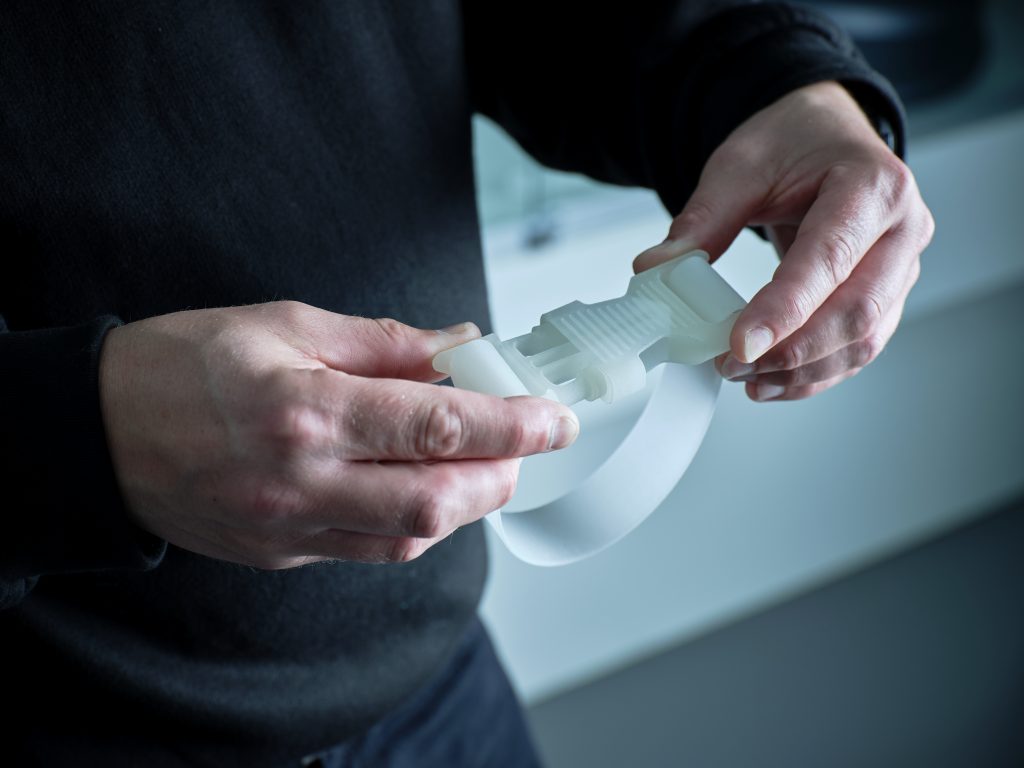
This speed condenses the product development cycle and encourages an iterative design process, vastly reducing inefficient waiting times during production and freeing up working capital more quickly.
The impact of time to market cannot be underestimated – with 79% of new products missing the launch date (CGT/Sopheon Survey), companies have an enormous opportunity to utilise 3D printing to increase sales and profitability. For small print runs and prototyping, 3D printing will always be the quickest option, with freedom from the constraints of minimum orders or batch runs.
Accessibility

When 3D technology was first introduced in the 80s it was specialised and often viewed as a ‘big budget’ prototyping process. Since then we have seen the rise of machine and material developments, leading to a multitude of differing processes which make the technology more cost effective. As more companies diversified their offering and invested in these technologies, with the emergence of service bureaus supporting mainstream adoption, AM has become the technology of choice for one-off prototypes right up to small scale production.
3D printing has also attracted large groups of home hobbyists and fanatics in a way that no other technology has. User groups created with these enthusiasts, such as 3D Hubs, have exploded in recent years; connecting designers to individuals and companies offering print services cost effectively and opening up the market for desktop printing.
The technology allows any users, even those with limited or no CAD experience, to access files on download sites such as Thingyverse, meaning that any given design can be manufactured by anyone and now in a wide range of materials.
Cost Effective
3D printing is unique in its ability to offer cost effective pricing from one part through to small batch production. Quite often, the one-off price is significantly more cost effective than other traditional technologies such as injection moulding, due to the lack of tooling investment and start-up costs. This means that hourly labour costs are dramatically reduced and material prices are lower as the part is built from the ground up. Traditional manufacturing techniques become more viable as volumes increase and the high setup costs are justified by the large volumes of production.
Curious about the cost of 3D printing? Get an instant quote.

Innovation
Increasing awareness of additive manufacturing means marketplace and customer demand for organic forms and innovative customised solutions is on the rise. The ability to rethink the design process not only encourages innovation in the product, but has the potential to disrupt the way parts and their supply chains are managed. Only those businesses actively engaged with the technology will ultimately gain competitive advantage and meet the needs of their customers. Offering speed to market, the ability to customise and accessibility to affordable production is creating designs never seen before and changing the dynamic of how we make and supply – whether that’s 3D printed organs or infrastructure on Mars!
